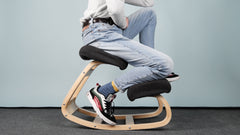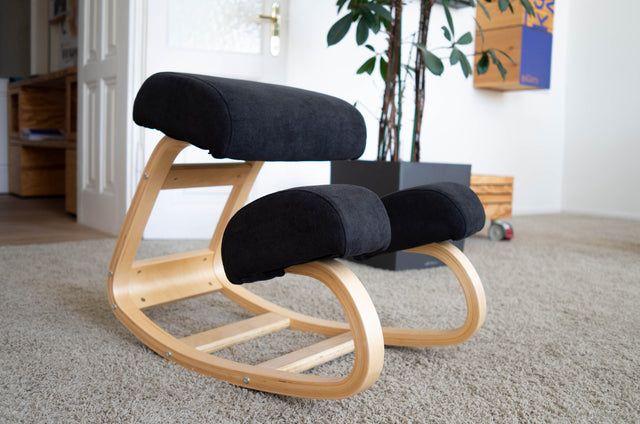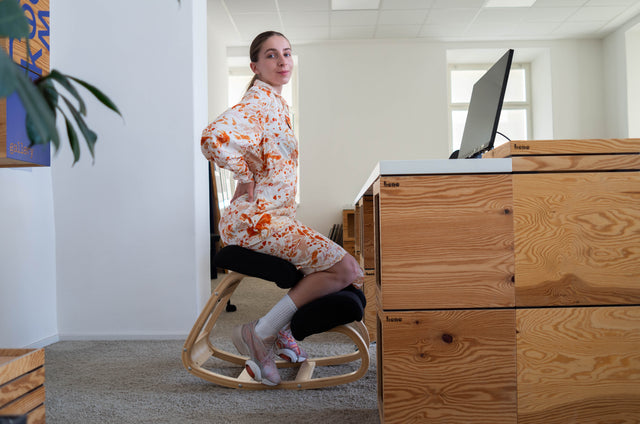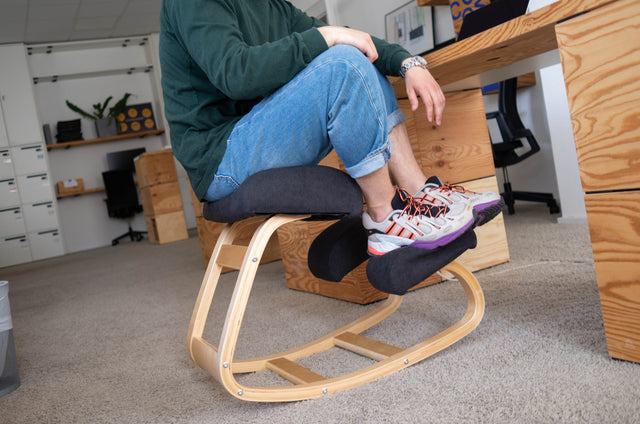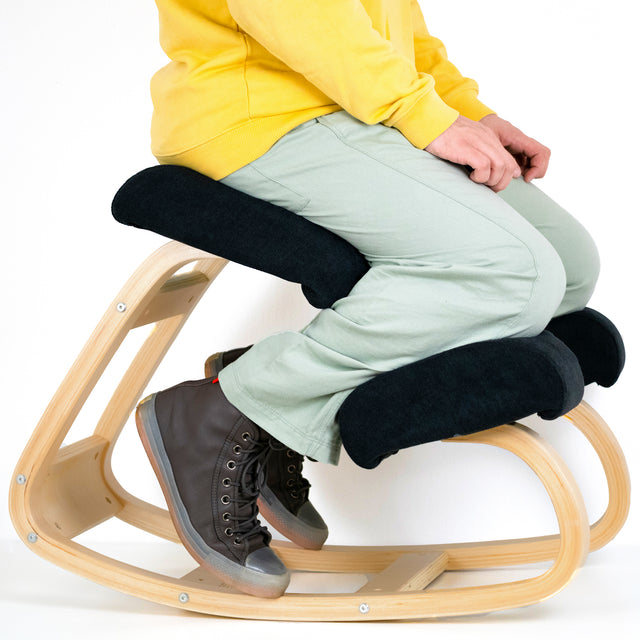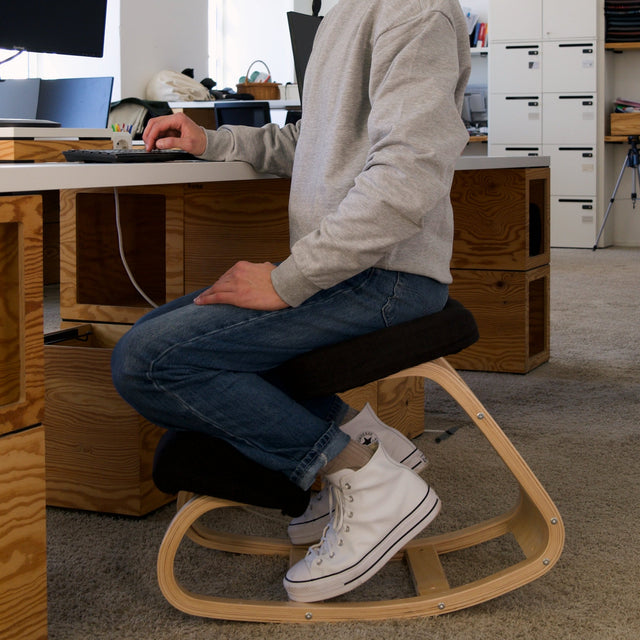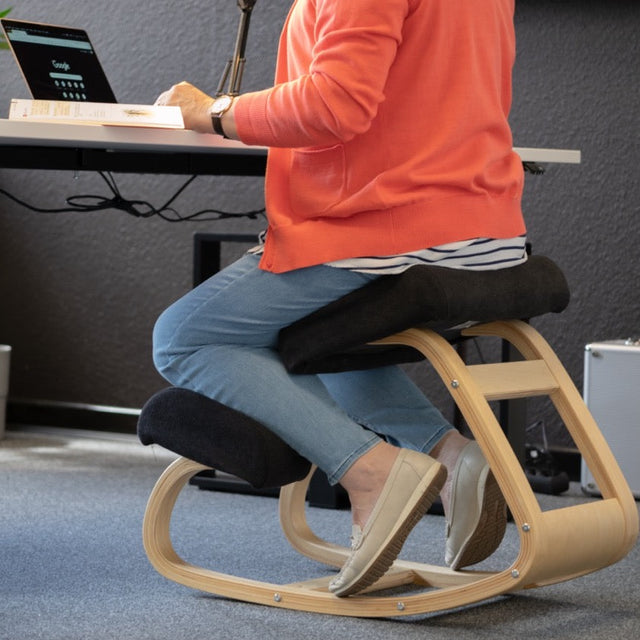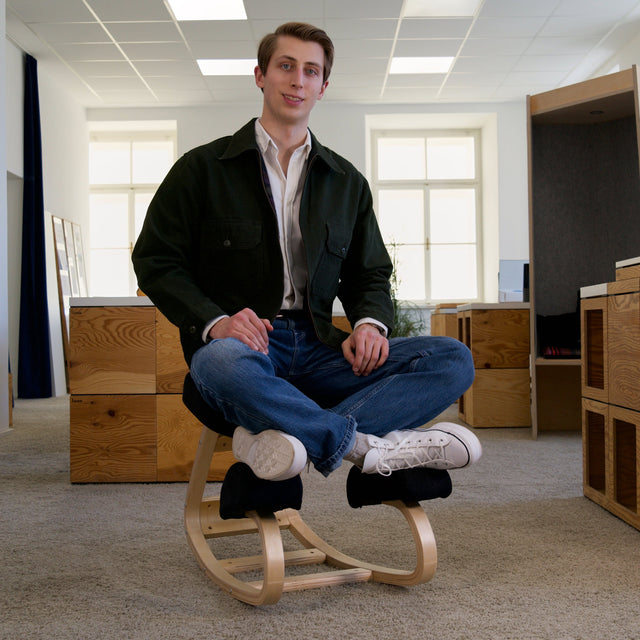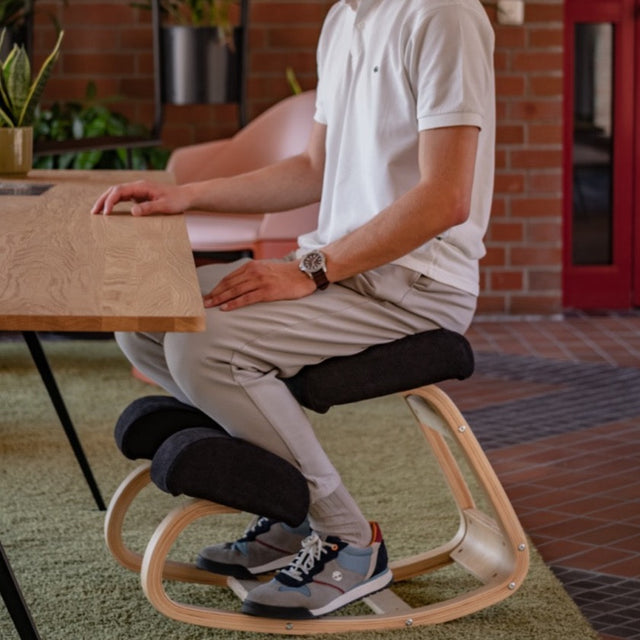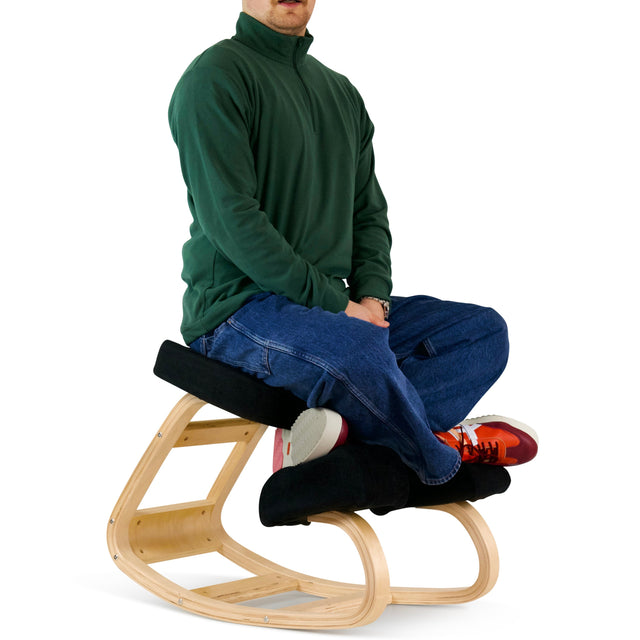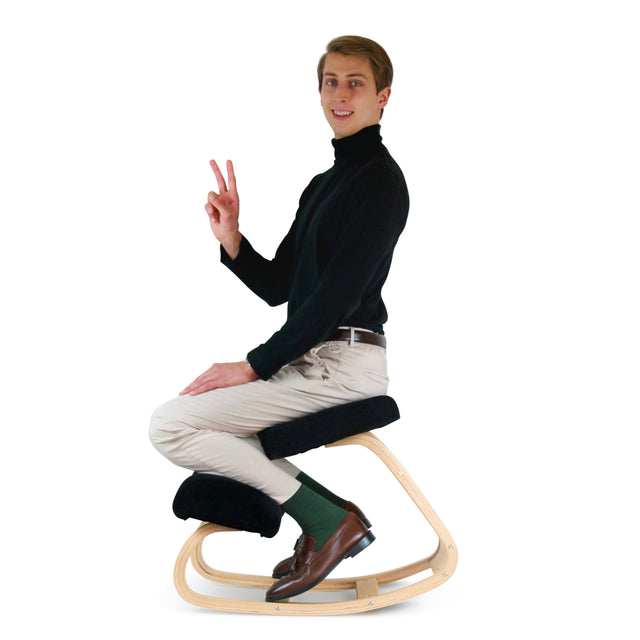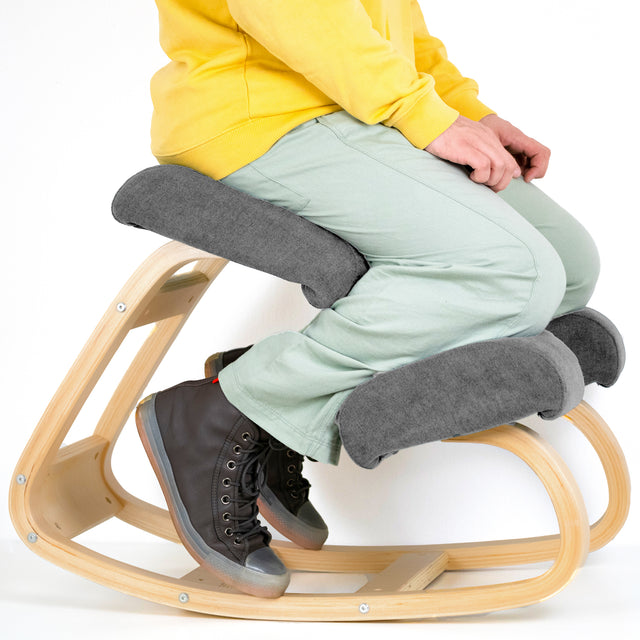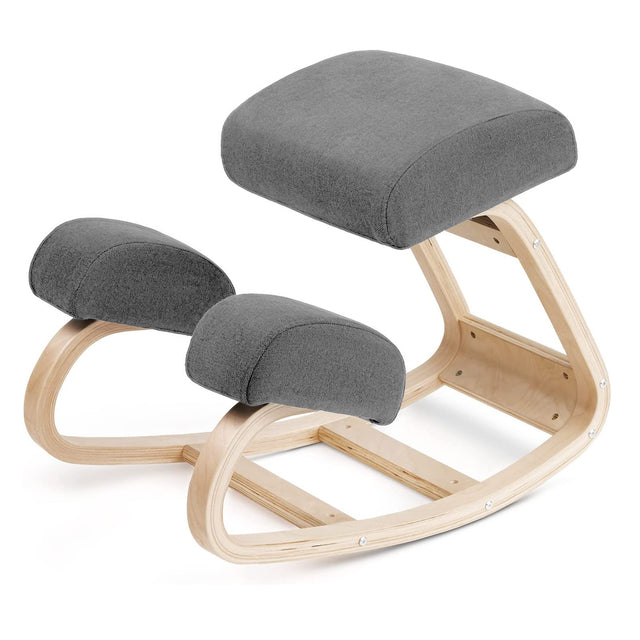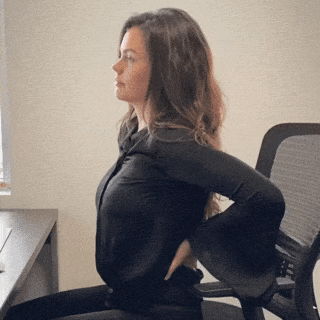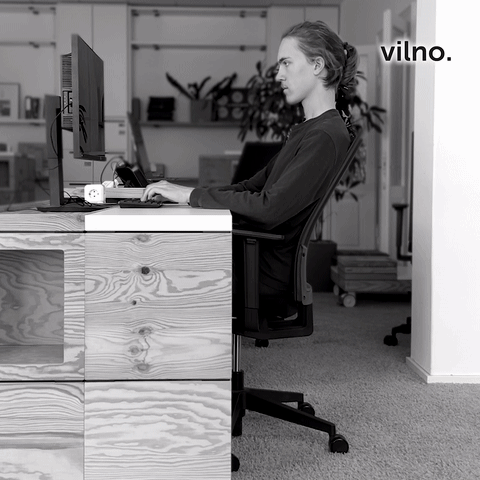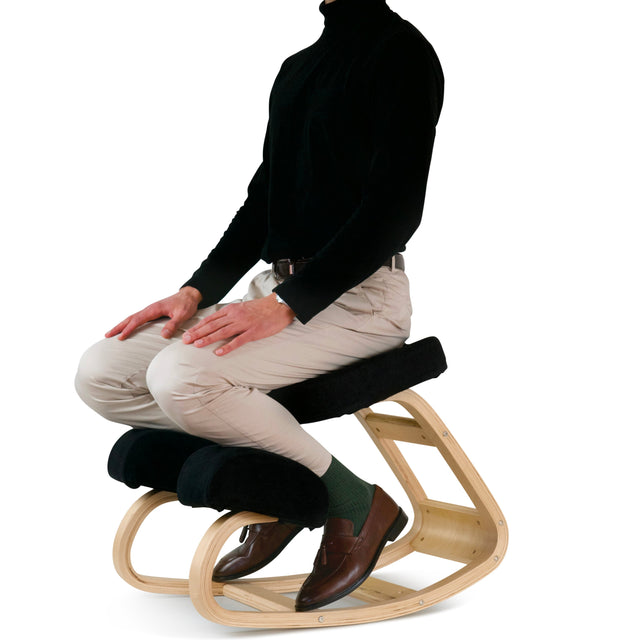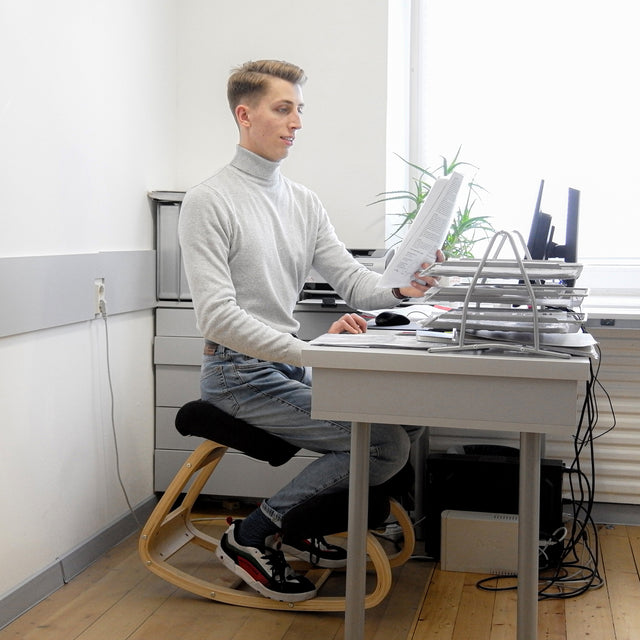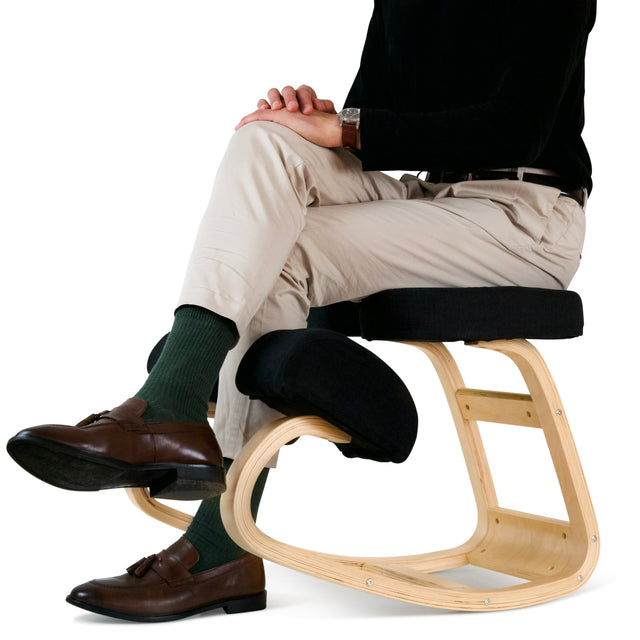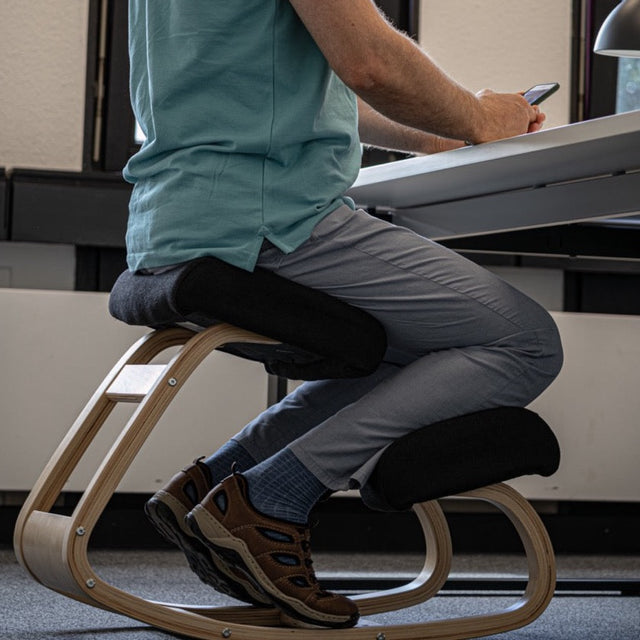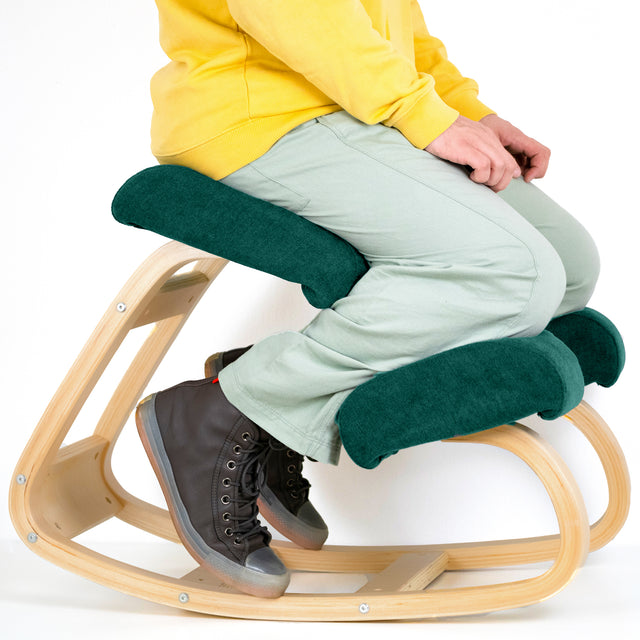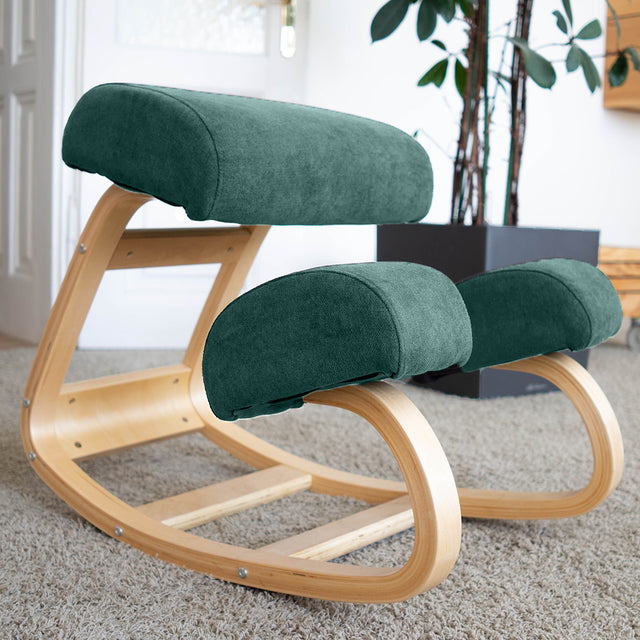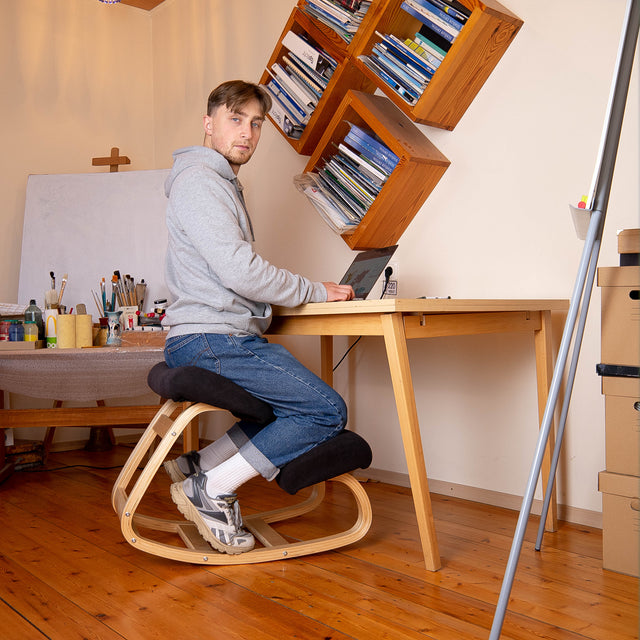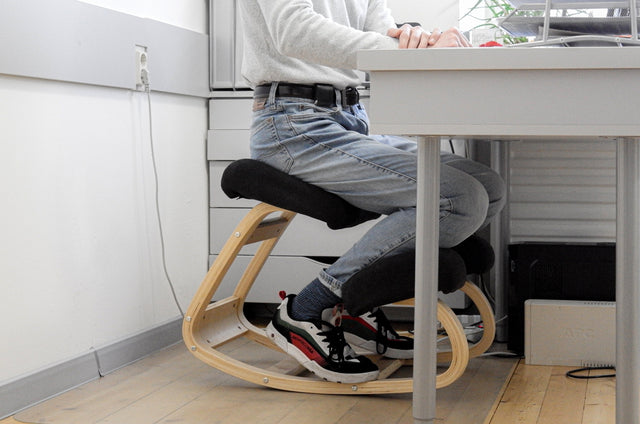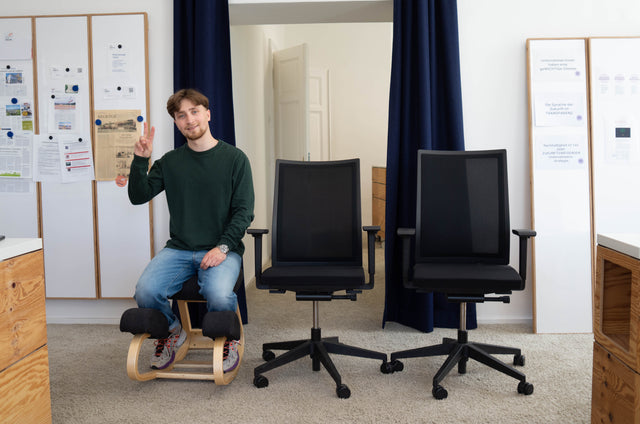Blog by Olivia Patt
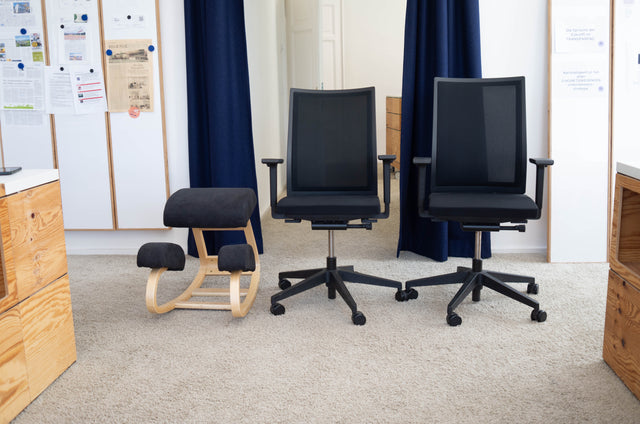
What is the difference between them?
Although the difference between an ergonomic kneeling chair and a standard sitting chair may be evident from the name, why would you select one over the other?
What distinguishes kneeling chairs from traditional "sitting" chairs? We want to help you understand the differences between these chairs, who they're designed for, and when you'd use them. Continue reading to find out if an ergonomic chair is the right option for you. Starting with how users are supposed to sit on them, a kneeling chair and a typical office chair couldn't be more unlike.
Kneeling chairs are designed for active sitting (kneeling and rocking), whereas typical office chairs are designed to sit and adapt in one or two positions. This fundamental design difference results in a wide range of use case scenarios.
What Is a Kneeling Chair?
While they are sometimes referred to as "kneeling" chairs, this is not necessarily the case.
A kneeling chair is a posture chair that allows you to sit in various upright postures to suit your needs. You're not just kneeling in kneeling chairs. There is still room for your bottom to rest. You may choose a kneeling chair because it matches your sitting style and physique. If you like to rock and sit actively (much healthier), you must try a kneeling chair.
You have the option of sitting in a variety of postures. Some individuals like to sit with their stomachs against their backs, others prefer to sit with their feet on the "kneeling" region, and others like the more typical Knees in front of them in a kneeling position."
Kneeling chairs are stylish, functional, and comfortable. They have an extensive range of motion and are small enough to fit under most desks and tables.
Are Traditional Chairs Bad?
With this in mind, we are not implying that conventional chairs are inherently "evil."
Traditional chairs have their time and place, and some "traditional" reclining chairs have atypical properties that make them beneficial for posture. For example, we have several traditional-style chairs that can support your body while enabling you to recline and rest.
One more time - traditional chairs have their time and place. There's nothing wrong with cuddling up with a good book in a soft rocking chair or recliner with a good book. If you want to sit in front of the computer and watch YouTube videos// Netflix - it's OK to use the traditional chair. But, if you have to sit on a chair all day for work, a kneeling chair could be a better option, as it was designed to promote a better sitting experience and right posture position during sitting.
Back discomfort, stiffness, and poor blood flow can all be caused by traditional chairs that lack adequate back support. They also don't provide you with as much mobility as a rocking kneeling chair.
Back Support
By their very nature, Kneeling chairs provide no spinal support, whereas a typical office chair is designed from the ground up to give back support. This may be off-putting to some users, but it is the point of a kneeling chair since it is through this design choice that all of the stated health advantages are reached.
Health Benefits
Kneeling chairs' proponents believe that frequent usage can aid digestion, respiration, posture, and joint health, among other things. This is because your neck, back, and shoulders are automatically aligned when you sit on a kneeling chair.
On the other hand, a well-made office chair should provide the same level of precise alignment if adequately set. Is there a quick answer?
Kneeling chairs provide specific health advantages over middle-cost office chairs, but not when it comes to high-end versions, $1800+.
Learning Curve
When it comes to a typical office chair, there will be no learning curve. Even if you're comparing a leather office chair to a mesh office chair, you have to sit down, make the required adjustments, and you're ready to go.
Kneeling chairs, on the other hand, will take some time to get used to due to their unusual design and intended function. Another piece of advice is to try and keep your old chair handy for at least the first week of adjusting to a full-time kneeling chair, if possible. It's best to play it safe just in case you find yourself distracted by the changes your body is going through. The whole point of upgrading to a new chair is to increase your productivity and focus during the day- there's no need to ruin that by rushing into things.
After your body has adjusted to your new kneeling chair, you can sit, and sit, and sit, and sit to your heart's content!

